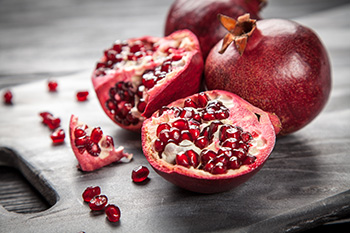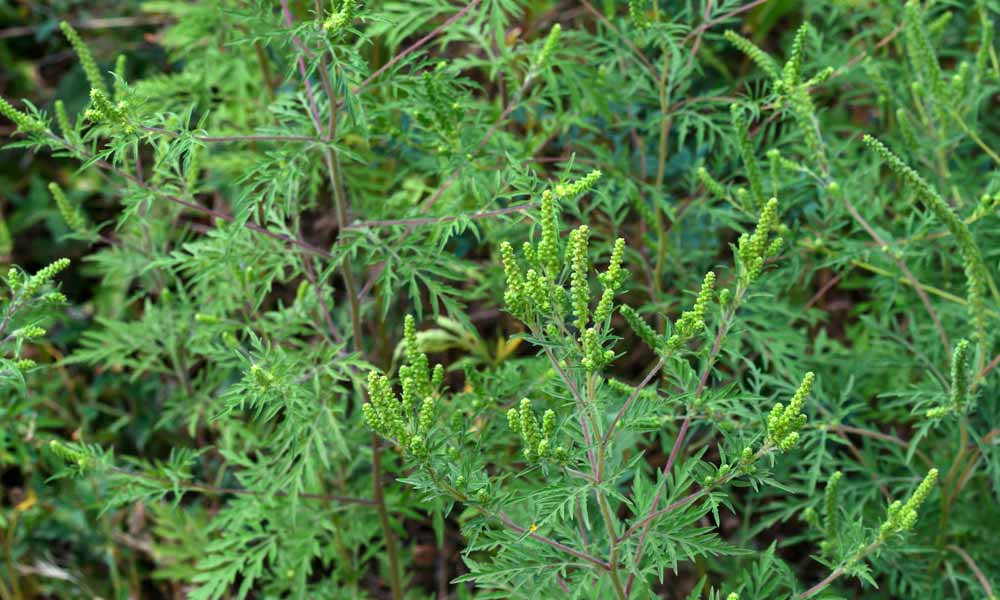Description & Health Benefits
 Pomegranate is a member of the Lythraceae family. Pomegranate is typically in season September through February in the Northern hemisphere and March to May in the Southern hemisphere.
Pomegranate is a member of the Lythraceae family. Pomegranate is typically in season September through February in the Northern hemisphere and March to May in the Southern hemisphere.- It is naturally high in vitamin C, potassium, low in calories and a great source of fiber.
- Vitamin C helps heal wounds, increases absorption of iron and acts like an antioxidant by protecting cells from damage caused by free radicals.
- Potassium helps to maintain normal blood pressure and muscle contraction.
- Fiber assists in normalizing bowel movements and helps to maintain a healthy weight. Fiber helps with weight control because fiber-rich foods are more filling which means you eat less and stay full longer.
- Pomegranate contains phytochemical including polyphenols, flavonoids and tannins which act as antioxidants protecting the body from free radical damage. Free radicals come from normal body processes as well as external sources such as environmental pollutants, cigarette smoke, industrial chemicals, exposure to X-rays, certain drugs, pesticides, and ozone gas. Over time free radicals can promote aging and age related diseases such as heart disease and cancer.
Selecting, Storing & Preparing
- Select blemish-free pomegranates that have a ruby-red skin color and are heavy in weight.
- The edible part of pomegranates is the seeds and juice from the seeds. You do not eat the peel or pulp.
- Store whole pomegranates in a cool, dry place out of sunlight. The whole fruit can be refrigerated up to 2 months.
- Pomegranate seeds (arils) can also be frozen. Freeze a single layer of seeds on a cookie sheet for up to 2 hours, transfer to a plastic freezer storage bag and keep in the freezer for up to one year.
- Prepare the pomegranate by slicing it in half or quarters. To remove seeds, submerge the cut fruit in a big bowl of water and gently loosen with your fingers. The seeds will sink while the white pulp will float. Remove the thin membranes from the top of the water and drain seeds using a colander. Or you can slice in quarters and remove seeds from the thin membranes using your fingers.
- To juice, pulse seeds in a food processor or blender and strain liquid using a cheesecloth. One large pomegranate makes 1/3 to 1/2 cup of juice.
- Anardana, the dried seeds of the pomegranate, is a spice used in Indian cuisine. Anardana can be purchased as a power or dried whole and is often used as a souring agent in vegetable and legume dishes. Store in an air-tight container in the refrigerator for up to one year.
Pomegranate Nutrition Facts
½ cup of seeds
Calories: 72 | Protein: 1.45 g | Fat: 1.02 g | Carbohydrate: 16.27 g | Fiber: 3.5 g | Sugars: 11.89 g | Calcium: 9 mg | Magnesium: 10 mg | Potassium: 205 mg | Vitamin C: 8.9 mg | Folate: 33 μg | Vitamin A: 0 IU | Vitamin K: 14.3 μg
Request an Appointment

